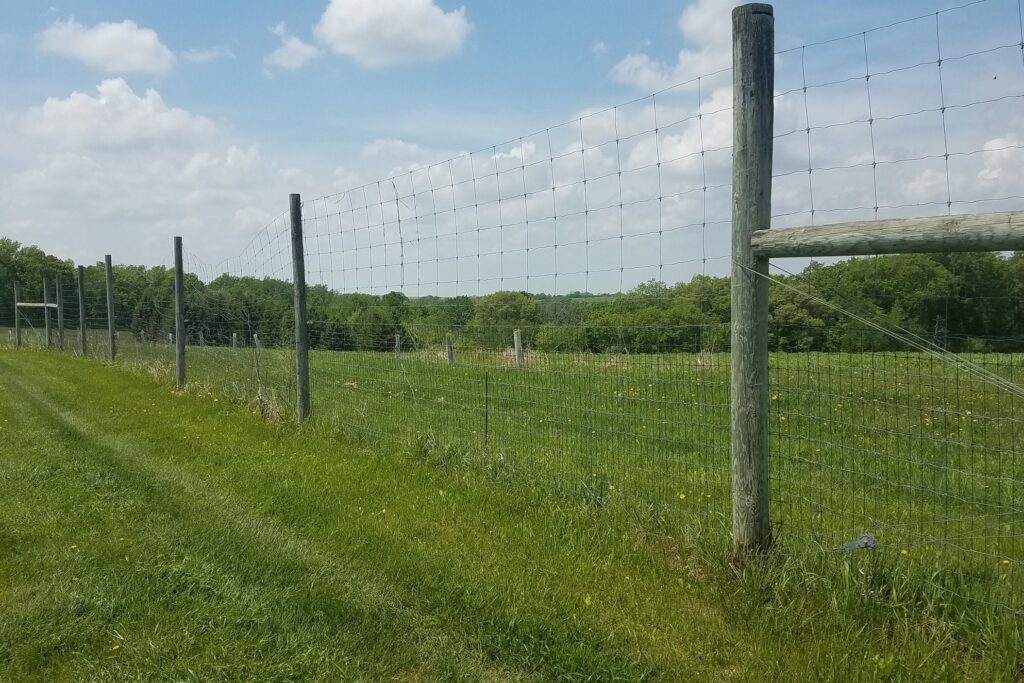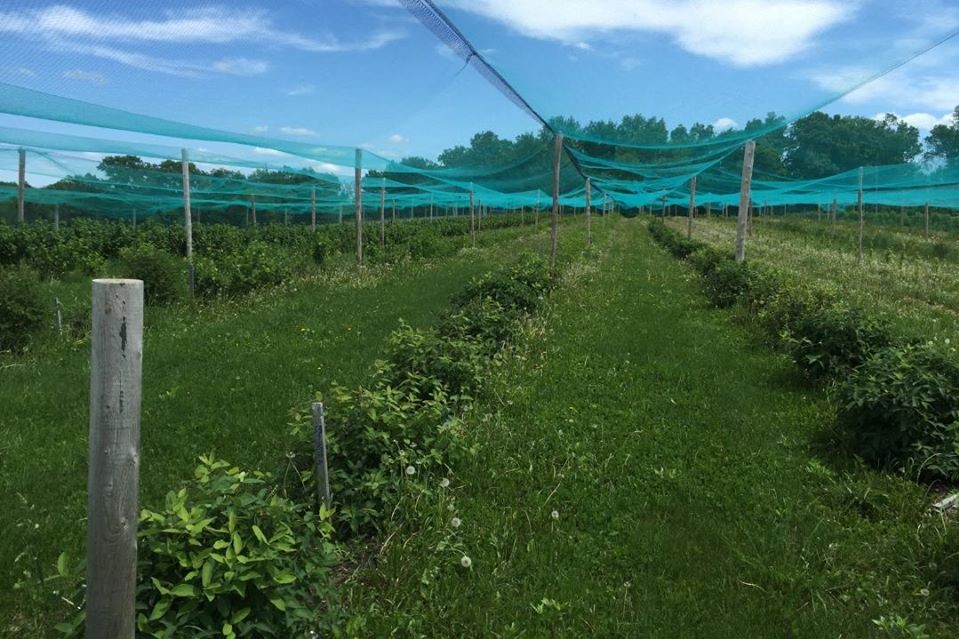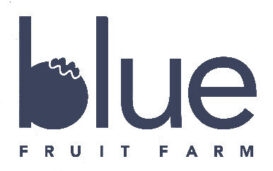Pest Management
We manage our pests naturally with animals, birds, and insects. We have developed Action Plans for each insect pest and fungi that are problems for us.

Deer
Deer are a major problem for farmers in our area. It’s one of the reasons why Jim and Joyce quit farming their 11 acres of organic vegetables in 1993. A major reason why they even considered starting Blue Fruit Farm was because the previous renter had installed an 8 ft woven wire fence around the 5-acre field. This has worked very well (except for when we leave the gate open)! We try to be very careful to always close the gate when leaving the field. We have not seen any deer inside our field since 2009.
Rabbit
We have had some experiences with rabbits eating the small blueberry and honeyberry bushes. Since then, we put hardware cloth cages around new plants for the first year or two though they still manage to conquer the fence especially in the quiet winter months.
Raccoons
We started having a problem with raccoons climbing in the cherry plum and plum trees closest to the woods, as well as eating large quantities of blueberries and juneberries. Raccoons climb right over the 8 ft fence! Jim installed an electric fence about 8 inches off the ground around the perimeter. The fence is powered by a solar fencer. The electric fence, combined with seasonal live trapping, helps keep raccoon losses to a minimum.
Birds
Birds, including robins and cedar waxwings, are a big problem for us, especially for our juneberries and blueberries. The first thing we did was to remove the bluebird houses we put up to attract bluebirds. Bluebirds eat fruit, too!
Overhead netting has been a project several years in the making at Blue Fruit Farm. We began using this system in 2015. In 2014, we erected cedar posts throughout the field to cover the majority of our crops – most importantly our blueberries, juneberries, and elderberries, which are favorites among the local birds. We now have overhead netting surrounding most of the berry rows that is high enough for us to walk and mow under.
For several years, we tried draping bird netting directly over plants as the fruit is close to ripening and draping netting over a plastic tubing attached to posts. The netting just gets in the way of harvesting and string trimming along the mulched rows. Birds seem to get in anyway, especially along the bottom. Birds can pick at fruit through the netting.

In addition to netting, Jim put up 2 raptor poles that allow real owls, hawks and eagles to patrol the area. He also exchanged the bluebird houses for wren houses which were mounted on posts inside the field periodically. Wrens are territorial and do not eat fruit. We also mounted several fake owls and hawks that have motion sensors–they can squawk and turn their heads. These are moved around so birds don’t get used to them. But all of these options have limited success.
Jim purchased a BirdGard SuperPro with 2 computer chips and 4 speakers. The 4 speakers are mounted at each corner of the equipment shed to project out over the 5-acre field. It is supposed to be effective for 6 acres. The 2 computer chips are rotated and project injured bird sounds and raptor calls in a random fashion. It is a little unnerving when working in the field but you get used to it. Usually, we turn it off when we are working in the field. It appears to help, but the most effective way to protect fruit from birds is to use overhead netting.
In 2021, Blue Fruit Farm received two grants from LOFF and SARE to install a solar powered laser system, AVIX Autonomic, to deter birds from eating our fruits. We are the first berry farm in Minnesota to utilize this system. We are still learning how to best use it for maximum effectiveness and will likely continue to net the west side of the farm while relying primarily on the bird laser for the larger east side of the farm. The bird laser does not harm the birds in any way. Birds perceive the moving laser light as a threat and flee in response. Read the grant reports from this project here.
Forest Tent Caterpillars
Within 2 weeks after we planted our first 800 blueberries in 2010, we noticed some leaves being eaten by forest tent caterpillars. We hand-picked some caterpillars but ended up spraying Bt to get them under control. We have not had a problem with forest tent caterpillars since.
Subsequently, we have noticed some tent caterpillar damage on blue plums, cherry plums and juneberries. These are Eastern Tent Caterpillars. They form webbed “tents,” which are commonly seen in roadside trees. We monitor during the spring. When we see tents, we use a hand propane torch to burn the tent, eggs and caterpillars. Its quick and rewarding, but weekly monitoring is key!
Eriophyid Mites
In the late summer and fall of 2012, we noticed some leaf curling in the Ranch elderberries in particular. These were identified as eriophyid mites, which are microscopic pests that can cause cupping and crinkling of the foliage. Severe infestations can destroy florets and young fruit. The mites are believed to overwinter under buds and bud scales on above-ground portions of the plant. We practice prevention by removing all prunings from the field.
We also applied beneficial nematodes (sourced from Peaceful Valley) in the fall of 2012. These nematodes attack the larval stages of soil-dwelling pests by entering their prey through body openings and releasing bacteria that kills its host within 48 hours. Nematodes also work against Japanese beetles, which we have seen in our fields and has become a problem for other local growers, particularly grape producers.
See our Pest Management Action Plans for more information on our pest management strategies.
